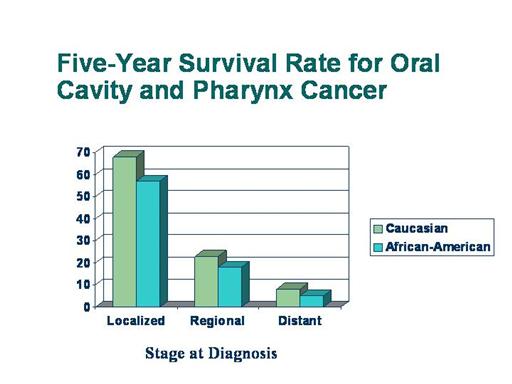| front |1 |2 |3 |4 |5 |6 |7 |8 |9 |10 |11 |12 |13 |14 |15 |16 |17 |18 |19 |20 |21 |review |
 |
The stage of the
cancer at diagnosis is very important in prognosis of oral cavity and
pharyngeal cancers. In general,
the more advanced the local disease, the worse the prognosis even in the
absence of regional metastasis.
The survival rate declines dramatically from local disease to distant
disease. The survival rate for
patients diagnosed with regional stage disease is only half the survival
rate for those diagnosed with local disease.
Site also affects
prognosis; oral cavity cancer offers better prognosis than pharyngeal
cancers, for example. In the
above graph, localized disease is that which is confined to primary
sites such as the tongue or tonsil.
Regional disease is that which has spread to the cervical
lymphatics, and distant disease refers to distant metastases.
Clearly, an early diagnosis markedly improves a patientís
probability for survival.
Especially alarming, however, are the consistent discrepancies between
races; survival rates of African-Americans are lower than those of
Caucasian patients. The causes of
such discrepancies are most likely multifactorial, including lack of
early detection and culture-related habits.
In addition to the obvious discrepancy between races, overall
survival has not improved significantly for any racial population over
the past 20 years.
|